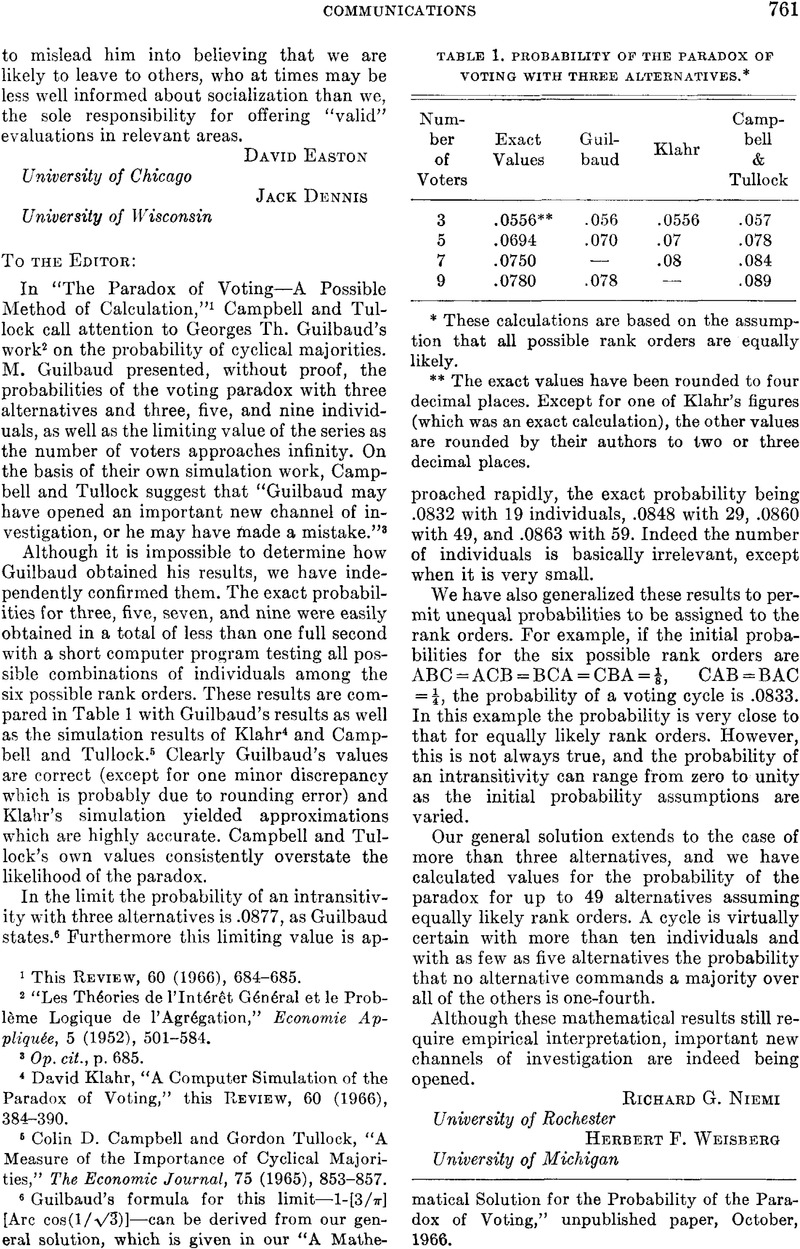No CrossRef data available.
Published online by Cambridge University Press: 01 August 2014

1 This Review, 60 (1966), 684–685.
2 “Les Théories de l'Interét Général et le Problème Logique de l'Agrégation,” Economie Appliquee, 5 (1952), 501–584.
3 Op. cit., p. 685.
4 Klahr, David, “A Computer Simulation of the Paradox of Voting,” this Review, 60 (1966), 384–390.Google Scholar
5 Campbell, Colin D. and Tullock, Gordon, “A Measure of the Importance of Cyclical Majorities,” The Economic Journal, 75 (1965), 853–857.CrossRefGoogle Scholar
6 Guilbaud's formula for this limit—1-[3/π] [Arc cos(1/√3)]—can be derived from our general solution, which is given in our “A Mathematical Solution for the Probability of the Paradox of Voting,” unpublished paper, October, 1966.
Comments
No Comments have been published for this article.